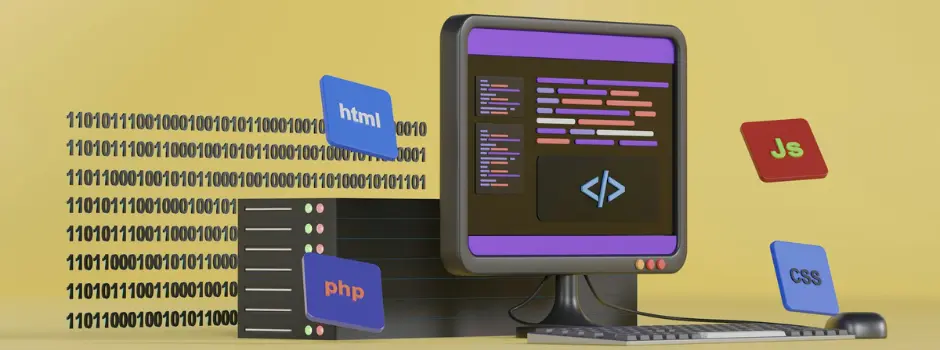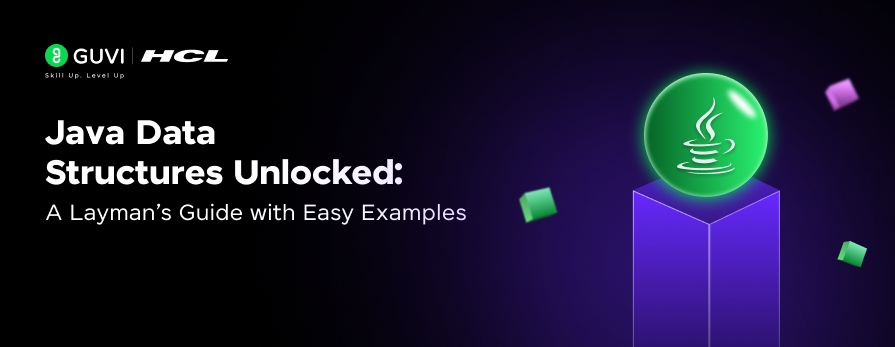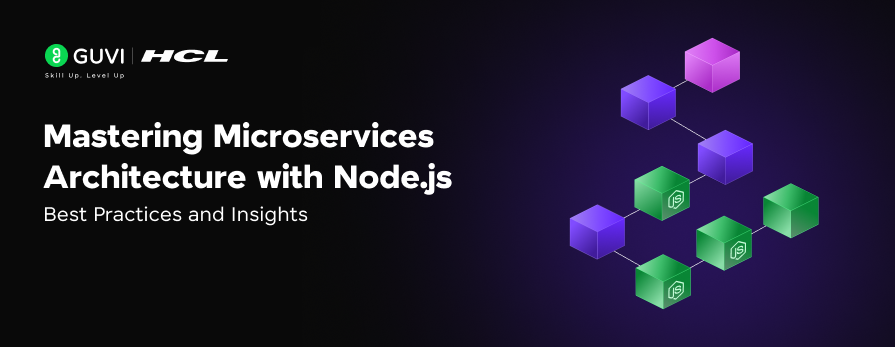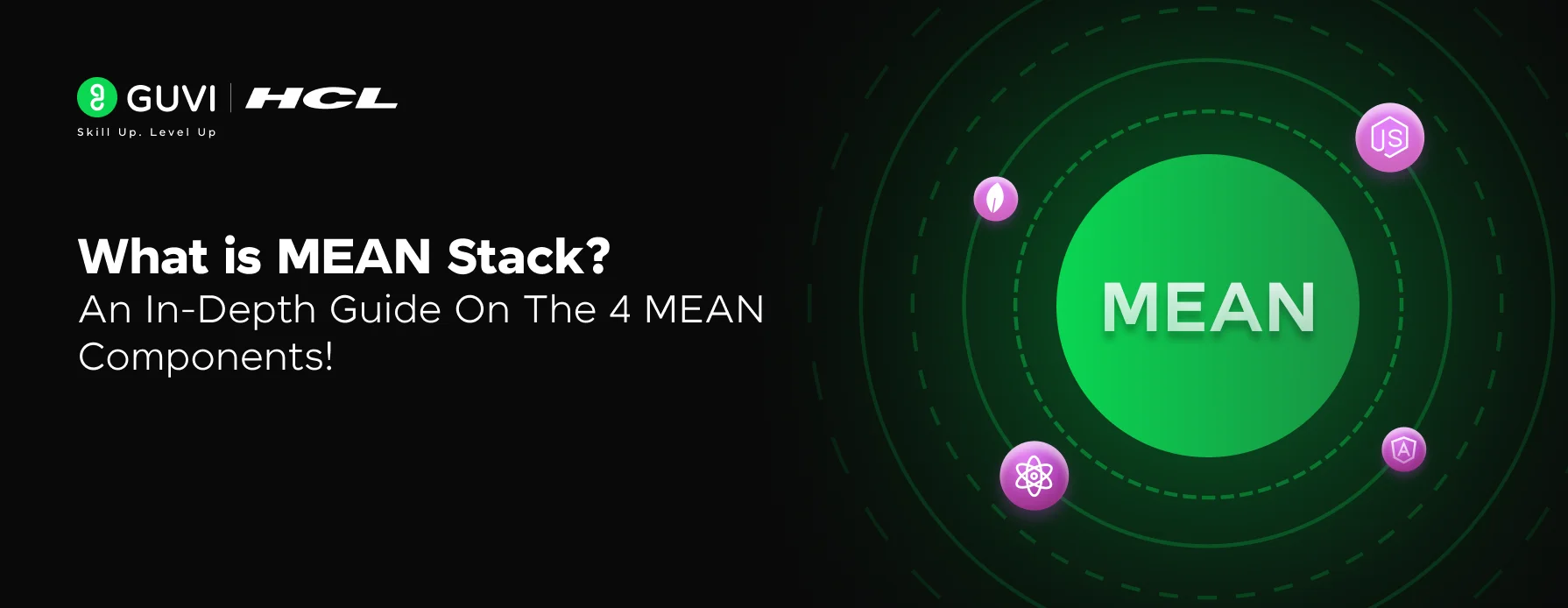![Backend Development: Roles, Responsibilities, Skills, and Salary - A Complete Guide[2024] 1 Post thumbnail](https://www.guvi.in/blog/wp-content/uploads/2024/02/feature_image-2.webp)
Backend Development: Roles, Responsibilities, Skills, and Salary – A Complete Guide[2024]
Dec 31, 2024 6 Min Read 6590 Views
(Last Updated)
Websites are not only about colorful outlooks, fancy transitions, or eye-catching illustrations. These are the things that come under the frontend but the real work happens in the backend development.
If you are someone who’s a fresher in backend development or someone who wants to switch to this domain, then this article is for you.
This article discusses everything about back-end development, starting from its basics to its roles and responsibilities including the skills required. Lastly, you will find the much-needed information about the salary range of a backend developer.
So, read till the end to know everything about backend development, and without any delay, let’s get started.
Table of contents
- What is Backend Development?
- Roles and Responsibilities Involved in Backend Development
- Developing and Managing APIs (Application Programming Interfaces)
- Database Management
- 3. Server-Side Logic
- Integration
- Skills Required for Backend Development
- Proficiency in Backend Programming Languages
- 2. Database Management
- Understanding of Server Management and Deployment
- Knowledge of RESTful APIs and Web Services
- Salary of a Backend Developer in India
- Conclusion
- FAQs
- What distinguishes backend development from frontend development?
- Which programming languages are considered essential for backend development?
- What is containerization, and how does it benefit backend development?
- What are microservices, and how do they relate to backend development?
- What is a CRUD operation, and why is it fundamental in backend development?
What is Backend Development?
![Backend Development: Roles, Responsibilities, Skills, and Salary - A Complete Guide[2024] 2 Backend Development](https://www.guvi.in/blog/wp-content/uploads/2024/02/backend_development.webp)
Imagine for a moment that you’re ordering your favorite dish from your favorite place through an online food delivery service. You’ve just placed an order through their sleek, user-friendly interface.
This simple action kicks off a series of events behind the scenes: verifying your payment, updating inventory, and sending the order to the restaurant, the delivery partner gets notified about this and after a few minutes, voila, the food will be in your hands.
This unseen process, ensuring your food is ordered just right, is possible because of backend development. All these meticulous details that don’t involve fancy outlooks, colors, and transitions but still make the user experience memorable happen at the back of the website, hidden from the user’s eyes and that’s why we call it backend development.
Unlike frontend development, which focuses on the user interface and experience, backend development is concerned with the server-side operations that make a website function effectively. This includes servers, databases, and application logic.
The backend is crucial for any website because, without it, even the slickest front end would be like a car without an engine. It might look great, but it won’t go anywhere. The backend is where user requests are authenticated, data is processed, and business logic is executed.
Read More: Introduction to HTML Tags: A Comprehensive Guide With Examples
Before we move to the next section, if you want to learn more about backend development, consider enrolling for a professionally certified online full-stack web development course by a recognized institution that can also offer you an industry-grade certificate that boosts your resume.
Roles and Responsibilities Involved in Backend Development
![Backend Development: Roles, Responsibilities, Skills, and Salary - A Complete Guide[2024] 3 Roles and Responsibilities](https://www.guvi.in/blog/wp-content/uploads/2024/02/the_image_should_depict_the_roles_and_responsibilities_.webp)
Backend development is totally different from frontend development as the latter only involves layouts, designs, look of the website whereas the former involves storage, security, and other server-side functions. Because of this, the roles and responsibilities of a backend developer are totally different from a frontend developer.
Let us understand more about the roles and responsibilities involved in backend development:
1. Developing and Managing APIs (Application Programming Interfaces)
APIs are like a medium through which different software applications communicate with each other. As a backend developer, you are bound to create and manage APIs and you can imagine this to be something like a bridge that bridges the gap between islands. Similarly, APIs allow you to transfer data seamlessly across systems.
To put it simply, let us imagine that you’re designing a weather app that fetches data from a third-party weather service. The API is the middleman that requests weather data from the service and delivers it back to your website in a usable format.
Crafting an efficient API requires not only technical know-how but a deep understanding of the needs of both the data provider and the consumer.
Also Explore: Use ReactJS to Fetch and Display Data from API – 5 Simple Steps
2. Database Management
One of the important roles and responsibilities in backend development is database management. Every application relies on data, making database management a cornerstone of backend development.
Whether it’s user accounts, product inventories, or transaction records, you have to design and maintain the databases that store this crucial information.
It is important to keep in mind that good database management goes beyond just storing data; it’s about organizing it in a way that’s both efficient and scalable. You need to anticipate future needs, ensuring the system can handle growth—both in terms of data volume and user numbers—without performance hiccups.
Know More: 10 Best Database Management Systems For Software Developers
3. Server-Side Logic
The server-side logic is where the website’s brain resides. It’s responsible for processing client requests, making decisions, and performing actions based on those requests. This includes everything from authenticating users and processing payments to generating custom content.
4. Integration
Integration is a crucial part of backend development that involves different parts of an application, or even different applications, working together smoothly. This could mean integrating a payment gateway into an e-commerce site or ensuring a CRM system communicates effectively with a marketing platform.
Effective integration is like conducting an orchestra where each instrument has to play in sync or the symphony would be boring. The challenge is to maintain harmony even as new ‘instruments’ are added or when the ‘music’ changes.
I’ve found that successful integration often relies on a deep understanding of both the technical details and the business objectives. For example, seamlessly integrating a third-party payment system not only requires technical skill but also an understanding of the user journey and how the payment process fits within it.
Explore: Major Roles And Responsibilities of a Web Developer
Skills Required for Backend Development
![Backend Development: Roles, Responsibilities, Skills, and Salary - A Complete Guide[2024] 4 Skills Required for Backend Development](https://www.guvi.in/blog/wp-content/uploads/2024/02/the_image_should_depict_the_skills.webp)
To succeed in the world of backend development, you need to have a specific set of skills that go beyond just writing code.
It’s about understanding how to handle data, ensuring servers perform like well-oiled machines, and crafting systems that can scale gracefully under pressure.
Let’s break down the essential skills required for backend development one by one:
1. Proficiency in Backend Programming Languages
The backbone of any backend developer is their proficiency in at least one server-side programming language. Each language has its own set of tools, frameworks, and idiosyncrasies that cater to different types of projects and performance needs.
- Python: Renowned for its readability and versatility, Python is a heavyweight in web development, data analysis, and automation. Its frameworks, like Django and Flask, are particularly popular for the rapid development of web applications.
- Java: An important language for mastering backend development, Java is famous for its portability, robustness, and extensive ecosystem. Spring Framework, for instance, is a powerhouse for building complex, high-performance web applications.
- Node.js (JavaScript): Node.js allows developers to use JavaScript on the server side, facilitating the development of fast, scalable network applications. It’s particularly well-suited for handling concurrent requests, making it a go-to for real-time applications.
2. Database Management
Data is the lifeblood of any application, and managing it effectively is crucial. You need to be super strong at both relational (SQL) and non-relational (NoSQL) databases to design, query, and maintain data storage solutions that are both efficient and scalable.
- SQL Databases: Understanding SQL databases (like PostgreSQL, and MySQL) involves mastering schema design, normalization, and complex query writing to manage relational data effectively.
- NoSQL Databases: With the rise of web applications requiring flexible, schema-less data models, NoSQL databases (such as MongoDB, and Cassandra) have become essential. They excel in scalability and speed, especially for unstructured data like JSON documents.
3. Understanding of Server Management and Deployment
Modern backend development is increasingly moving towards cloud-based solutions and containerization, which necessitates a solid understanding of server management, deployment strategies, and cloud service providers.
- Cloud Services: Familiarize yourself with platforms like AWS, Google Cloud, or Azure is indispensable for deploying and managing applications at scale. These platforms offer a range of services from virtual machines to managed databases and container orchestration.
- Containerization and Orchestration: Tools like Docker and Kubernetes have revolutionized deployment by making applications portable and scalable. Understanding containerization is crucial for building systems that can be easily deployed, scaled, and managed across different environments.
4. Knowledge of RESTful APIs and Web Services
Creating and consuming web services and APIs is a daily task for backend developers. Understanding RESTful principles and how to design intuitive, scalable APIs is key to enabling seamless communication between different parts of an application and between different applications entirely.
Developing a RESTful API for a client’s inventory management system taught me the importance of clear, consistent API design. It wasn’t just about making it work; it was about creating an API that was easy for other developers to understand and integrate with, emphasizing the role of empathy in backend development.
You can sign up for GUVI’s Backend Development Beginners Bundle to gain professional skills that can help you become a professional backend developer and teach you everything about it.
Explore More: Top 5 Back-End Programming Languages for Web Development
Salary of a Backend Developer in India
![Backend Development: Roles, Responsibilities, Skills, and Salary - A Complete Guide[2024] 5 Salary of a Backend Developer in India](https://www.guvi.in/blog/wp-content/uploads/2024/02/the_image_should_depict_the_salary_related_backend_.webp)
Now that you understand the definition of backend development and its roles and responsibilities, it is time to address the important part of the article, the salary range of a backend developer in India.
We will categorize this section into 3: The salary range of a fresher, a person with less than 5 years of experience, and a person with more than 5 years of experience.
1. Entry-Level Backend Developer
If you are just starting into backend development fresh out of college or a full-stack development boot camp, your initial salary can vary widely based on the company size, location, and the specific technologies you’re skilled in.
For freshers, the full-stack development job market in India offers a broad range, but you can typically expect a starting salary ranging from INR 3,00,000 to INR 8,00,000 per annum.
2. Mid-Level Backend Developer
With a few years under your belt, you start to create an impression. You’ve navigated through a range of projects, faced challenges head-on, and come out the other side with a richer understanding of backend development.
At this stage, with less than 5 years of experience, the salary range widens significantly due to the growing demand for skilled developers who can contribute to more complex projects.
In India, professionals in this bracket can expect to earn anywhere from INR 8,00,000 to INR 20,00,000 annually. The variation is large because it reflects the diversity of the tech industry, where certain skills, like proficiency in cloud services or expertise in high-demand programming languages, can command higher salaries.
Also Read: Salary of a Full Stack Developer in India
3. Senior Backend Developer
If you reached the 5-year mark and beyond, congratulations, you’re now a seasoned backend professional. You’ve seen the ebb and flow of tech trends, adapted to new technologies, and possibly led projects or mentored juniors.
This depth of experience, coupled with a track record of successful projects, positions you for the upper echelons of the salary spectrum.
For backend developers in India with more than 5 years of experience, salaries can range from INR 20,00,000 to INR 30,00,000 or even higher, particularly for those in lead roles or with expertise in niche technologies.
At this stage, your ability to solve complex problems, architect scalable systems, and lead teams plays a significant role in determining your value to employers.
While these figures provide a glimpse into the salary range that you get out of a career in backend development, it’s essential to remember that salary is just one part of the equation. Job satisfaction, work-life balance, and opportunities for continuous learning and growth are equally important.
Know More: Top 10 Product-Based Companies for Full-Stack Developers
If you want to learn more about backend development and their practice, then you must sign up for the
Certified Full Stack Development Course, offered by GUVI, which gives you in-depth knowledge of the practical implementation of backend development through various real-life FSD projects.
Conclusion
In conclusion, backend development stands as the backbone of a website, that powers the seamless functionality and user experience of it. From managing server-side logic and databases to developing APIs and ensuring system integration, the roles and responsibilities of a backend developer are both diverse and critical.
Mastery in various programming languages, database management, server operations, and a deep understanding of RESTful APIs and web services are essential skills needed for this domain.
It’s a profession that not only demands continuous learning and adaptation but also offers the satisfaction of knowing you’re behind the magic of a seamless web experience, making it an exciting and fulfilling career choice for aspiring and experienced tech professionals like you.
Also Explore the Top 10 Backend Web Development Frameworks
FAQs
Backend development focuses on server-side logic, database management, and application integration, whereas frontend development deals with the user interface and user experience.
Essential languages include Python, Java, Ruby, and Node.js, each with its unique frameworks and use cases.
Containerization packages an application with its dependencies, making it easier to deploy and scale across different environments. It benefits backend development by enhancing portability and consistency.
Microservices architecture breaks down an application into small, independent services that communicate over APIs, offering flexibility and scalability for backend systems.
CRUD stands for Create, Read, Update, Delete – fundamental operations for interacting with database records. They are essential for building dynamic, data-driven applications.






















![Top 20+ React Interview Questions and Answers [2025] 6 Top React Interview Questions](https://www.guvi.in/blog/wp-content/uploads/2022/01/Interview-Questions-1.png)
![What is ReactJS? A Beginner's Guide [2025] 7 what is reactjs](https://www.guvi.in/blog/wp-content/uploads/2025/04/what-is-reactjs.webp)
![What Does a Front End Developer Do? A Beginner’s Guide [2025] 8 Feature image - What does a Front End Developer do A Complete Guide](https://www.guvi.in/blog/wp-content/uploads/2024/02/Feature-image-What-does-a-Front-End-Developer-do-A-Complete-Guide.webp)







Did you enjoy this article?